Wine Of The Year 2022 As Tasted By Ken Gargett
by Ken Gargett
A friend recently acquired an excellent collection of wines to add to his cellar. They were in absolutely brilliant condition and included some very rare older Penfolds wines. As it turned out, Penfolds itself was keen to pick up a few of these. Without going into full details, the wines that caught the corporate eye were some very old Granges, including the 1959, one of the famous hidden Granges, and the 1962, a legendary year for the producer.
There was also an extremely rare Bin 28 from 1959, the very first release of this wine. This bottle is so rare that it was only a few years ago that, according to chief winemaker Peter Gago, Penfolds discovered that it had made that wine. Records from those days are perhaps less than we would expect today.
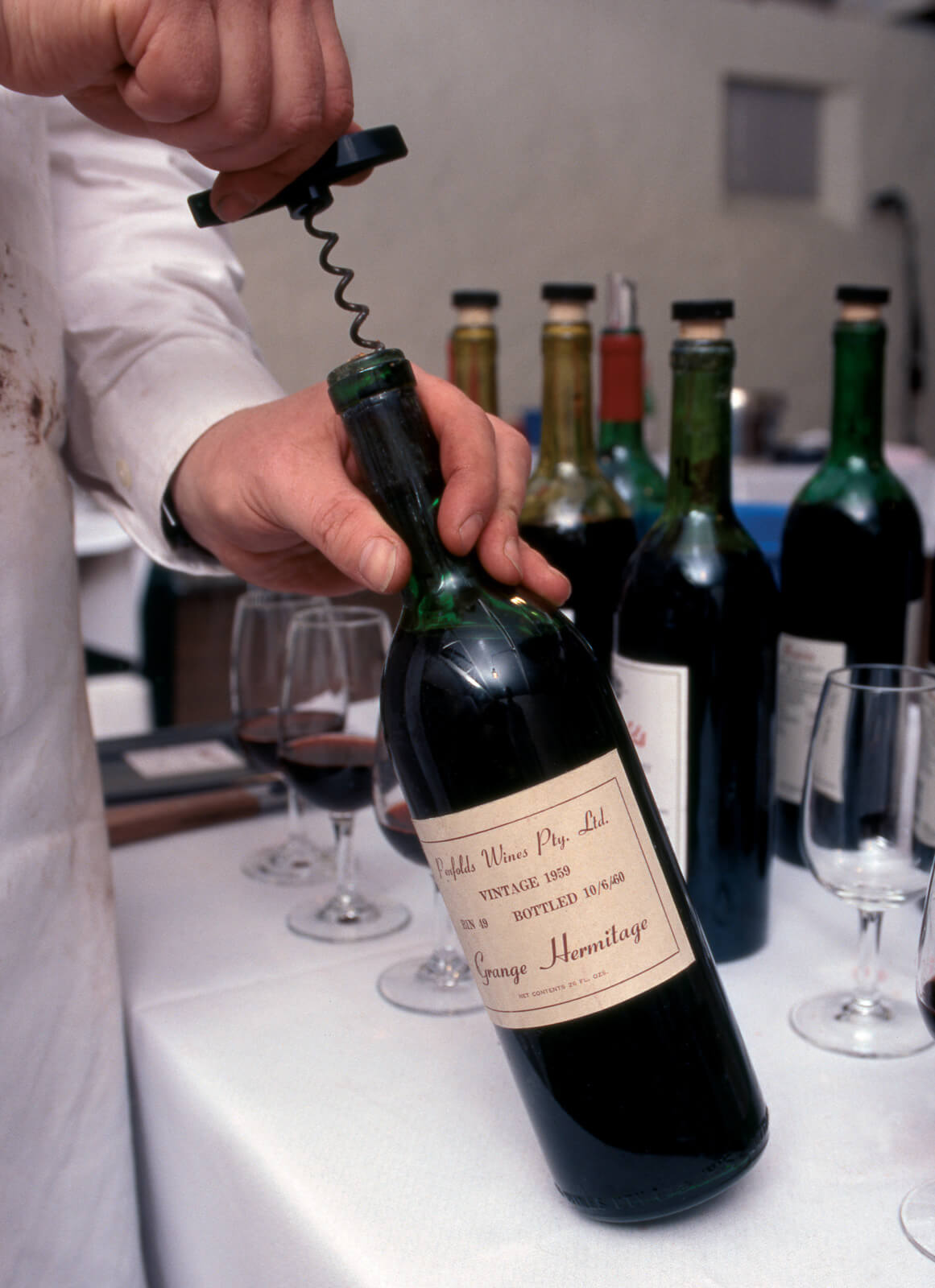
Penfolds Recorking Clinic
I recently caught up with Gago at the Penfolds Melbourne Recorking Clinic. These clinics have been going for some 30 years, pandemic notwithstanding, and they are as popular as ever. Basically, anyone with a Penfolds wine – it does not have to be Grange, though the wines do tend to be the producer’s top releases – that is 15 years or older can be brought along (as many as you like, though it is necessary to book).
Each wine will be opened and assessed by a Penfolds winemaker. If considered to be in acceptable condition, topped up with a small quantity of the current vintage of the same wine and then provided with a new cork and a sticker to reflect what has happened. Over the years, since they began this in 1991, Penfolds has gone close to recorking some 200,000 bottles.
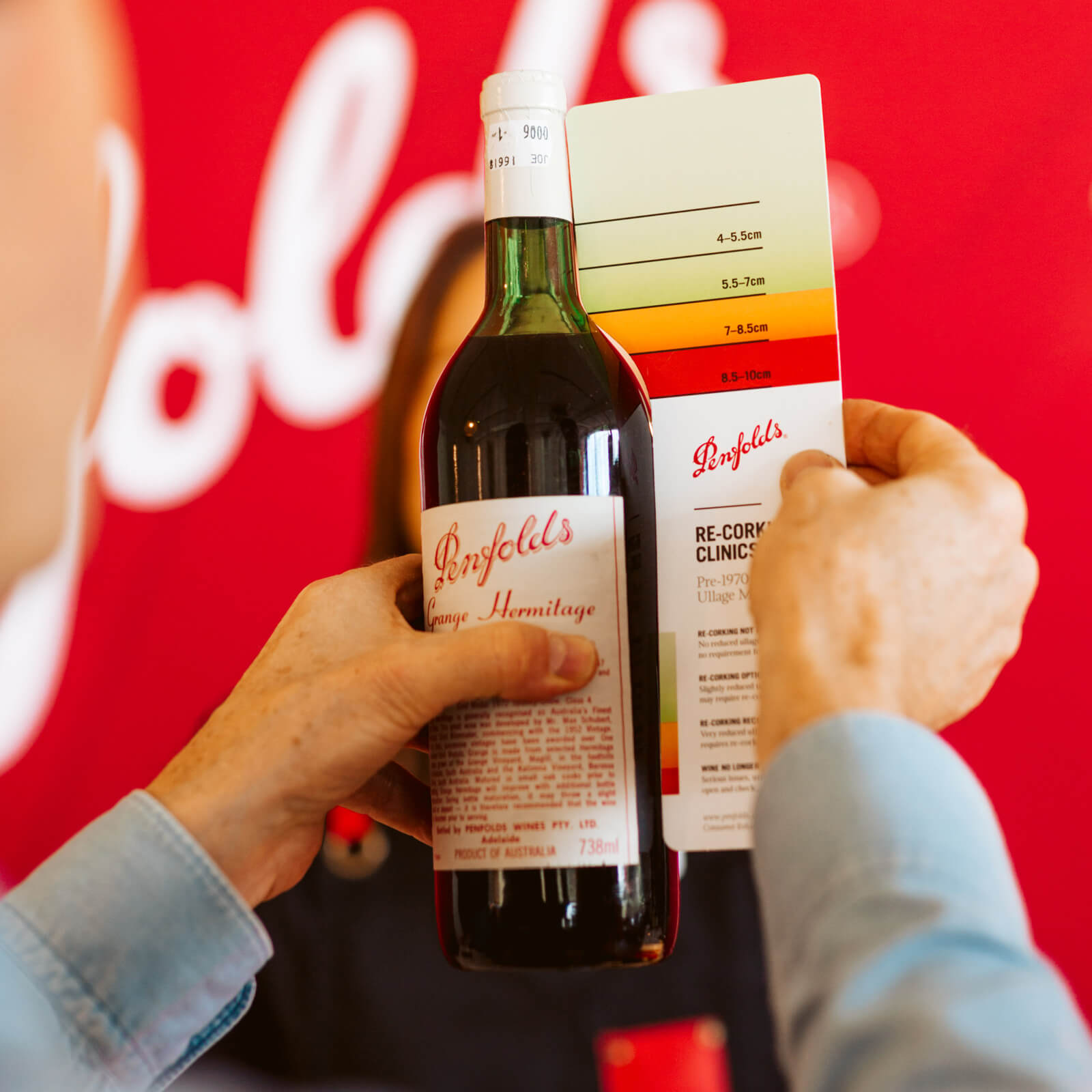
Penfolds Recorking Clinic
This service is useful for anyone who may be considering selling wines at auctions as it verifies that the wine is in good condition. Also useful for anyone keeping the wines to drink at a later stage. You know you have a good wine waiting in the wings and you are not wasting cellar space on duds. I suspect it is this latter category that forms the vast majority of those attending the recorking clinics.
Of course, if the team decides that the wine is not good condition, whether by sight or tasting, a blank cork will be inserted, and the wine returned to its owner or dumped. It means there can be some very unhappy wine lovers on the day, but overall this complimentary service is much loved and appreciated by owners of Penfolds wines.
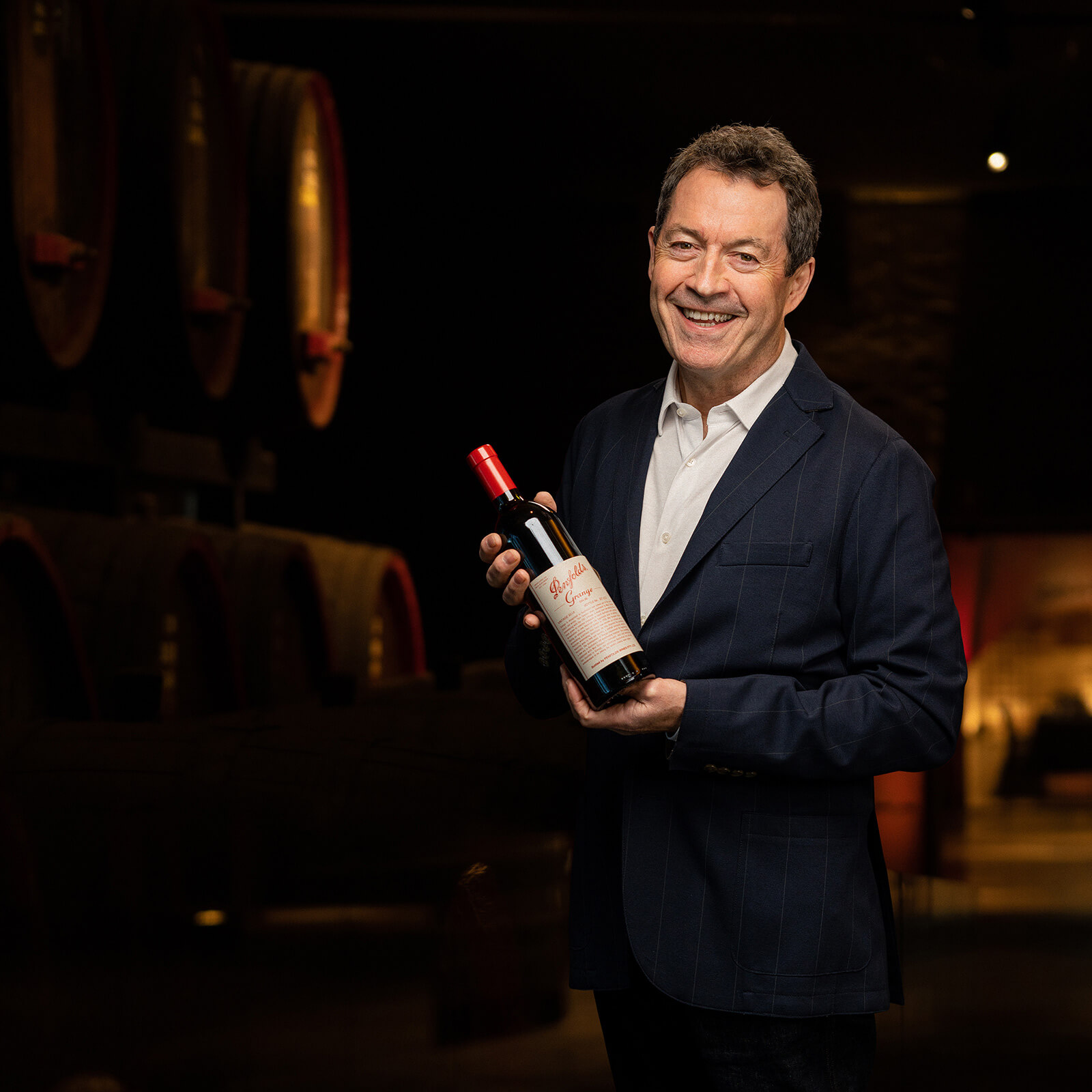
Peter Gago, Penfolds chief winemaker
While catching up with Gago and chatting about the wines, he kindly offered us a glass or two. I’ll confess I was keen to try the 2022 Riesling by Penfolds. This is from a spectacular vintage, but I had not been excited by it when I first tasted it. Whatever the reason that left it a little underwhelming on first introduction, no such reservations this time. A glorious Riesling.
Penfolds 2018 Grange and its genesis
There was one wine, however, that I was even keener to taste again: the 2018 Grange. I’d given it 100 points the first time I tasted it and was blown away. That said, when one goes big, so to speak, for such a young wine, there are always nagging doubts. Did it really deserve such an exulted score? I was far from the only one to rate it so highly, but I was still keen to see whether or not I had gotten a bit too excited on the day.
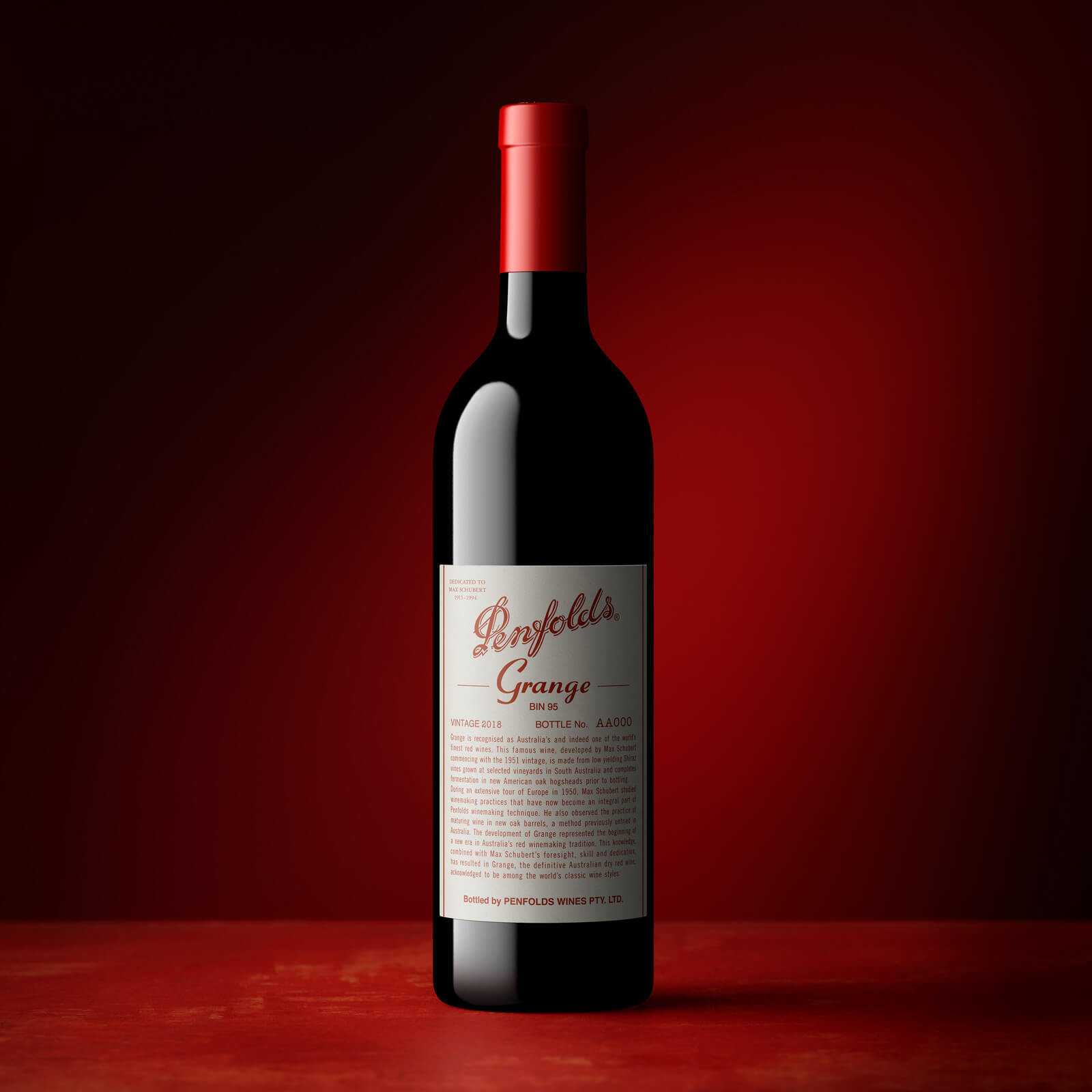
Penfolds Grange Bin 95 2018
Absolutely not. This is a truly spectacular wine, fully deserving of its score. Indeed, I think it is the most thrilling young Grange (Aussie red wine, if you like) that I have ever tasted, and that in time it will sit with the very best: 1952, 1953, 1962, 1966, 1971, 1976, 1986, 1990, 1991, 1996, 1998, 2002, 2004, 2008, 2010, and 2012. No doubt others will have their own view on the greatest Granges, but all these must rank with the finest (in fairness, I should state that I have included the 1952 on reputation as I have not had the pleasure).
Grange is one of the best-known stories in Australian wine, always worth recapping, especially as a bottle of the very first vintage, 1951, sold at auction last month for AUD$157,624. Not bad for a wine that was never released commercially – it was simply considered an experiment at the time and is apparently only just this side of undrinkable these days.
Grange had an unlikely genesis. Penfolds’ head winemaker back in the late 1940s was the legendary Max Schubert. In those days, the market was very much focused on fortifieds, with table wines a distant second. Schubert made several visits to Spain and Portugal to study fortified making, but he had a strong interest in table wines and on the way home he ducked up to Bordeaux for a few days.
Schubert was blown away by what he saw there and returned determined to create an Australian “First Growth.” Of course, easier said than done.
The first problem was funding it, though his employers were largely supportive of his experiments provided they did not get in the way of his real work – which in those days was very much on various fortifieds rather than table wines. First Growths tend to be heavily Cabernet Sauvignon dominant with varying amounts of other varieties, especially Merlot. Well, in the late 1940s, early 1950s in Australia, good luck finding much of either, especially Merlot, at the level of quality Schubert required. What we did have, in abundance, was Shiraz. At this stage, Shiraz was dominant even in regions that would become so famous for Cabernet such as Coonawarra.
In addition, First Growths spent time maturing in new French oak. At that stage, American was the oak most commonly found in Australia; there was simply not the quantity or quality of French oak available. So new American it was. While First Growths (indeed, all the top Bordeaux) were from single estates, Australia was all about blending, not only vineyards but regions.
So, the result would be a wine made mostly from Shiraz – only a few Granges over the years have been 100 percent Shiraz, most having a small percentage of Cabernet. It would be sourced from a wide range of regions and matured in new American oak. It has ever been thus.
So nothing at all like a First Growth then, but it started a line of wines that have long been generally considered as Australia’s finest. Personal preference might take one elsewhere and there are a number of exceptional contenders. But Grange has the runs on the board.
The first Grange, an experimental wine, was the 1951 and Penfolds has never missed a vintage since then. The first intended for commercial release was the 1952. Schubert’s intention was a wine that could match great Bordeaux in aging ability, so it was into the cellar with the first vintages for as long as he could get away with. After some years, he finally brought them out for a tasting for the Penfolds hierarchy (Penfolds headquarters was situated half a continent away in Sydney so the daily goings-on at Magill were of little interest). But as Schubert said, that hierarchy had become “increasingly aware of the large amount of money lying idle in their underground cellars at Magill.”
To say the unveiling was a disaster of near Biblical proportions would be an understatement. The wines were hated, even ridiculed.
Schubert was devastated. He was inordinately proud of these wines, believing them to be exceptional. The tasting included vintages 1951 to 1956. The wines were treated with contempt. One well-known expert’s assessment was, “Schubert, I congratulate you. A very good, dry port, which no one in their right mind will buy, let alone drink.” Another compared them to “crushed ants.”
Yet another thought he’d take advantage of the situation and offered to take a few dozen off Schubert’s hands, but he expected them for free as he thought them not worth any money. One wanted some for use as an aphrodisiac, believing the wine to be like bull’s blood, hence something that would, “raise his blood count to twice the norm when the occasion demanded.” A young doctor requested some as an anesthetic for his girlfriend (the mind boggles as to why this was required – and given his position as a doctor, why he did not have access to something more suitable).
It is worth noting that wines like 1952, 1953, and 1955 are now considered to be some of the greatest ever made in Australia. The 1951 is now little more than a curio and I doubt anyone is paying AUD$150,000 for the pleasure of drinking it. It is for collectors only.
After the debacle, the order came from Sydney: “Cease production.”
Despite knowing full well that defiance of such instructions would end his career, Schubert was so convinced as to the ultimate quality of these wines that he ignored the directive. From 1957, he made the wines in secret. Of course, this meant that he could not add the usual quantities of new oak to the budget among other things – there is only so much you can hide from bean counters, even long distance. But the wines were made and hidden away in the depths of the cellars under false names and records. This gave us the “hidden Granges” of 1957, 1958, and 1959. So it is not hard to see why Penfolds was delighted with the opportunity to get hold of one of the last remaining 1959s.
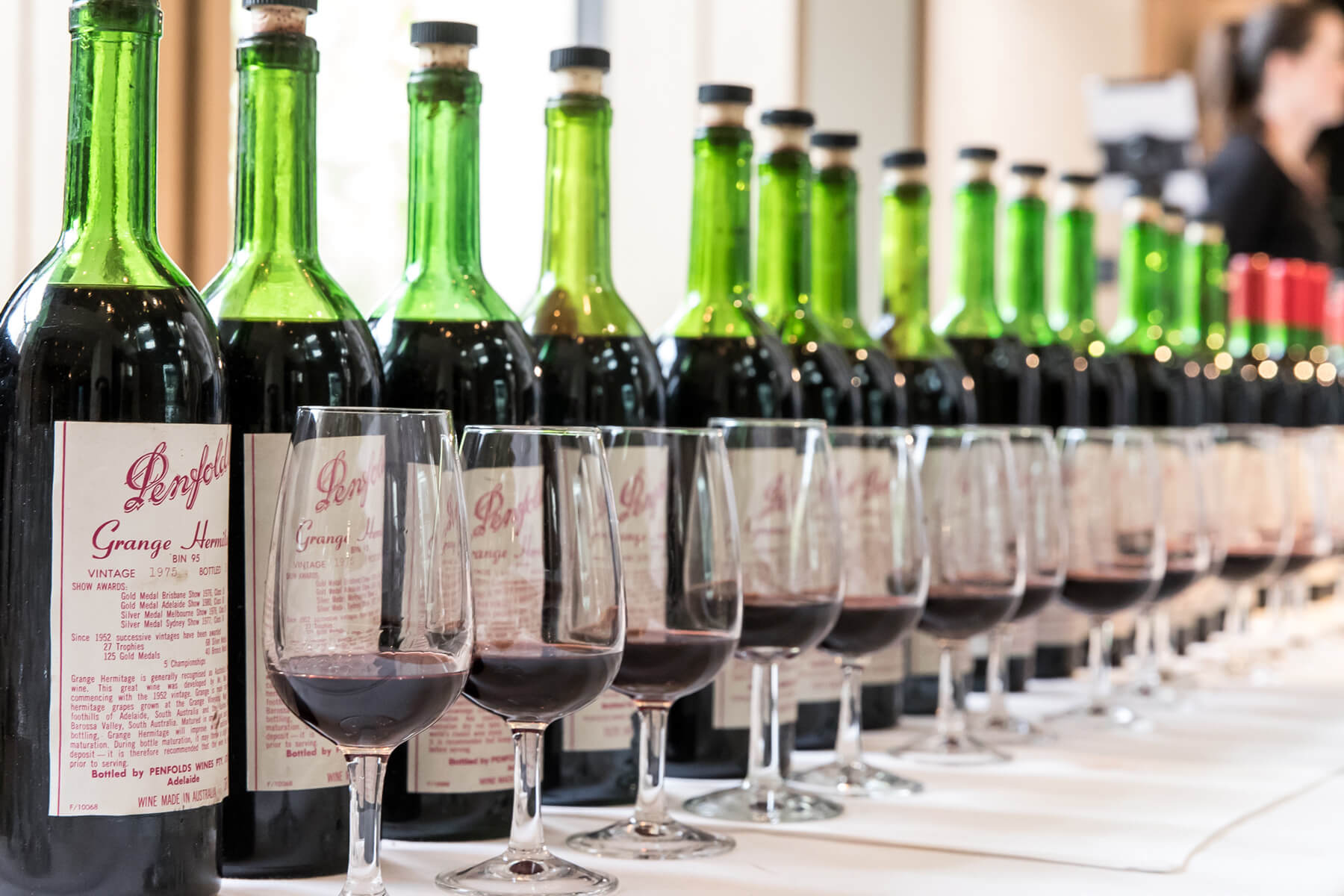
Penfolds Grange vertical tasting
At the time Penfolds still had stocks of the early Granges and little idea what to do with them. Schubert entered them in shows – wine shows are very important to the Australian wine industry. Not surprisingly, they started to not only win medals but to dominate the shows. Naturally, this caught the eye of the hierarchy, and the decision was made to reverse the earlier edict. Schubert was instructed to recommence production. I can find no record of the reaction by the Penfolds board when it discovered that he’d never stopped, but I would love to have been the proverbial fly on the wall.
Peter Gago is only the fourth winemaker since Schubert began with the 1951. Don Ditter and John Duval were the other two.
I mentioned that 1962 was another wonderful year for Penfolds and Grange. Those wines celebrate their sixtieth anniversary this year, and as good as the ’62 Grange is, it was the legendary Bin 60A 1962 that stole the show, although this was yet another wine never released for commercial sale. Find out more about it in Penfolds Bin 60A 1962: Australia’s Greatest Wine Ever (Or Certainly A Serious Contender).

Penfolds Bin 60A 1962 vintage
Recently with Gago I had the chance to taste the Bin 60A 1962 again. Spectacular, but in Gago’s eyes this particular bottle was not spectacular enough (this is an extraordinary wine that never seems to drop its standards for a moment, with pretty much every bottle I have ever tasted a version of perfect). I’ll confess, I was perhaps at a lowly 98 points for this bottle, and it usually does ring the bell at 100 (completely different to a newly released wine scoring the same, which is why it always helps to read tasting notes from any reviewer rather than simply look at a score).
So Gago thought we should open another (the latest auction price was a little short of AUD$30,000 a bottle, but who am I to disagree – in fairness, I did make the appropriate noises to politely dissuade him from opening another of the dwindling stock, only 425 cases were made and after six decades one imagines not many can be left, but I may not have pushed as hard as I perhaps should have done). This one was the full 100, every day of the week.
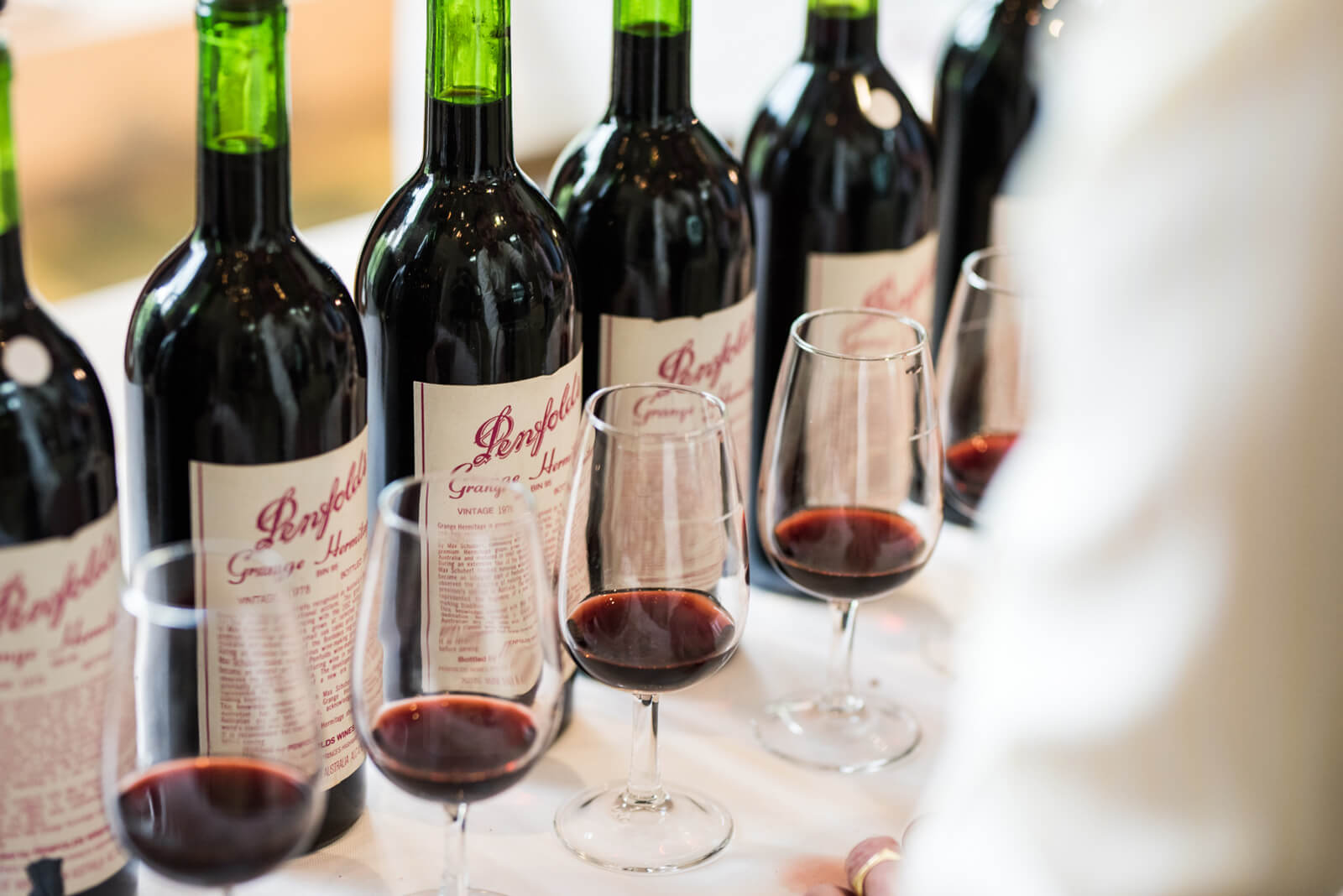
Penfolds Grange vertical tasting
Ken Gargett’s wine of the year
So my “wine of the year” came down to the choice from a pair from Penfolds: the 1962 Bin 60A and the 2018 Grange. I’m opting for the latter, simply because it will still be available (and a fraction of the price, though hardly everyday drinking at AUD$1,000).
As with most Granges, a dribble of Cabernet has been included with the Shiraz – just three percent. Multi-regional but Barossa dominant (69 percent) with material from McLaren Vale and the Clare Valley, the wine spent 18 months in new American hogsheads.
Nearly opaque magenta, there is great intensity and impeccable balance. The nose is complex and complete. Black fruits, cassis, charcuterie, licorice, mocha, coffee bean notes, chocolate, beef stock, and soy. There is certainly oak evident, but it is of the finest quality and integrating superbly. Every taste brought forth something new. Fresh yet dense, supple, and seamless. Such length. Abundant tannins but they are so silky. The intensity is maintained for the full length. This wine, in good cellars, will surely age and improve for many decades.
A truly magnificent wine, on its way to becoming a legend. My wine of the year. 100.
One final note: I may be jumping the gun a little. Friends are gathering in a few days for an end-of-year lunch, and among the planned wines are the 2005 Domaine de la Romanée-Conti Richebourg and the 1945 Latour, so I might be forced to come up with an entirely new wine of the year. If the last couple of years has taught us all something, don’t sit on something special waiting for the right time. It might never come.
You may also enjoy:
Penfolds Bin 60A 1962: Australia’s Greatest Wine Ever (Or Certainly A Serious Contender)
Penfolds 2016 Grange And G4: Superlative Wines, Well Deserving Of 100 Points. Each!
The Sensational (Grange) G5 Wine, Peter Gago, And The History Of Penfolds
Leave a Reply
Want to join the discussion?Feel free to contribute!



Merry Christmas Ken. If you’re down the Hunter Valley way at any stage and have some spare time would be great to catch up again. Best wishes Bernard
Unless you have deep pockets no point in reading this.
Morning James. You do realise that you are on a watch site where most of the watches seem to cost about the same as some of us make in a year?
Entirely up to everyone what they do or don’t read, of course. I’m never likely to own a Ferrari but that doesn’t mean i don’t want to learn about them or read about them. I’ve come to the realisation that I am never going to climb Everest but doesn’t mean I don’t read about those that that do. Not sure I see the point of limiting oneself in this way. If, on the other hand, the subject is of no interest, then of course don’t waste your time.
Happy Christrmas.
I was hoping he was going to review the best value under 10 dollars 😍
Some very very good wine, with a longer history than I thought. Although out of reach to purchase it was a good read.
Thank You.
Thanks Gary. It certainly is a cracker.
Aussie wine has a much longer history than many realise. Some years back, I visited a Champagne House which had just taken an interest in a Yarra winery. Despite being over a century old, I remember how stunned the guys were to learn that the Yarra winery had been around for considerably longer, although with a few breaks in production along the way.
Very interesting and educating.
I am not in the position to say anything about wines, but I do like to read about the subject and learn.
Not because I’m not going to buy a very expensive wine…I won’t enjoy being illustrated by this article.
I do enjoy wines… Thanks.
Thanks Jose.
Would be great if you would review the Napa Valley reds.
Hi Jay, Thanks for the thought. Fair to say you have more chance of great Napa reds than under $10 wines here.
We have touched on Napa reds once or twice but I very much agree. Certainly not to the extent we should.
I was hoping to do a piece on Harlan – a fabulous producer, but the gentleman who was bringing some examples to a recent tasting changed his mind at the last minute and turned up with a 1945 Latour. So it was a bit hard to complain, although sadly, the Latour was as dead as the proverbial dodo. Useless.
If I am doing a piece on Napa reds, or anything for Q&P, I am keen that we look at the best of the best. And that can be a touch difficult with American wines downunder. But I do have some ideas which might work later in the year.